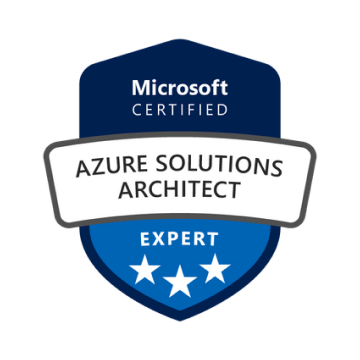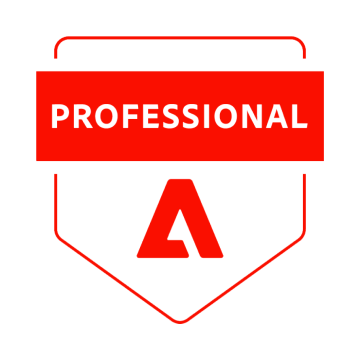Federal IT Solutions
Modernize grid software without interrupting power delivery. We connect OT and IT, refresh EMS/SCADA and EAM/ERP stacks, and build data pipelines that support NERC CIP and FERC/DOE reporting. We translate federal requirements into code, align with NIST controls, and deliver clear runbooks that cut maintenance and speed incident response.

Our Offerings
OT–IT Integration & SCADA Modernization
We connect EMS/SCADA, DCS, and data historians with enterprise apps so operations, planning, and compliance teams work from the same source of truth. Work starts with an interface inventory and network/data flow map. We then replace brittle point-to-point links with event streams and APIs, add protocol adapters (IEC 61850, DNP3, Modbus, MQTT), and harden time-series ingestion from PI/AVEVA or similar systems. The outcome is cleaner data, fewer manual handoffs, and faster incident triage.
Compliance Automation for NERC, FERC, and DOE
We translate control requirements into jobs your systems can actually run. That includes evidence pipelines for CIP controls, automated asset/patch attestations, change logs tied to tickets, and dashboards that match audit language. We map controls to NIST 800-53/CSF and relevant federal guidance, so every report points to verifiable data with timestamps and lineage. Audits become a by-product of daily operations, not a fire drill.
Asset & Work Management Systems
We implement and extend EAM/CMMS (Maximo, SAP, Oracle) to match utility field reality: planned and emergency work, switching orders, inspections, and outage coordination. Expect clean master data models, mobile work orders with offline sync, standard job plans, spares visibility, and vendor integrations. We add IoT/condition inputs so maintenance windows are based on actual asset health, not calendar guesses.
Data Platform & Grid Analytics
We build a lakehouse that ingests AMI/MDM, PMU, SCADA, weather, and market data with quality checks and business catalogs. Engineers get governed feature stores for forecasting load, detecting anomalies, and prioritizing vegetation or asset risk. Business teams get curated marts for reliability, SAIDI/SAIFI, and cost recovery analysis. Everything ships with repeatable pipelines, tests, and clear ownership.
Field Mobility & GIS Apps
We create rugged mobile and web apps for crews, inspectors, and contractors that work offline, sync fast, and capture photos, redlines, and e-permits. Integrations include Esri ArcGIS, EAM, and document control so as-built updates and closeouts land in the right systems without retyping. Supervisors get real-time progress and safer dispatch decisions during storms and planned outages.
Cloud & DevOps for Regulated Programs
We design network topologies, VPC peering, private endpoints, and environment segregation that align with NIST and FedRAMP-moderate patterns. Infrastructure is code (Terraform), builds are signed, images are pinned, and CI/CD gates tie to change control. We add logging, metrics, and tracing from day one so incidents are easier to spot and resolve. For federal interfaces, we isolate data exchanges and monitor them with clear runbooks and escalation paths.
How We Bring Value To Your Business
Practical wins for utility operations and compliance—delivered with clear architecture, working software, and documentation teams can maintain.
1
Faster incident response, shorter outages
We unify alarms, events, and logs from EMS/SCADA, field devices, and apps into one view, add correlation rules, and codify runbooks. Dispatchers and engineers see cause, impact, and next actions sooner, so restoration moves faster.
2
Lower run costs across legacy and new stacks
Brittle point-to-point links become APIs and event streams. Infrastructure is code, builds are signed, and environments are reproducible. The result: fewer breakages, simpler upgrades, and less vendor lock-in.
3
Compliance that rides on daily operations
Evidence pipelines automatically collect asset baselines, access changes, patches, and ticketed approvals. Dashboards mirror NERC CIP and FERC/DOE report structures, so audits are quicker and findings are easier to address.
4
Trusted data for planning and reliability
We add quality checks, lineage, and catalogs to AMI, SCADA, PMU, weather, and market feeds. Planners get reliable marts for SAIDI/SAIFI and cost recovery; engineers get feature stores for forecasting, anomaly detection, and risk ranking.
5
Safer, more productive field work
Offline-first mobile apps tie into GIS and EAM, capturing photos, redlines, and e-permits without retyping. Supervisors track progress in real time and coordinate switching, inspections, and closeouts with fewer callbacks.
6
Predictable delivery and clean handover
Work ships in two-week increments with acceptance criteria, tests, and clear runbooks. Your team gets admin guides, diagrams, and knowledge transfer sessions, so operations don’t stall when projects finish.
Challenges We Commonly Solve
The same blockers show up across utilities – we remove them fast and keep the fixes maintainable.
Cut outage minutes and audit stress.
Why Choose WiserBrand
We deliver maintainable systems for utilities and leave your team stronger after handover.
1
OT–IT + Data under one roof
One team covers EMS/SCADA, EAM/ERP, GIS, and the data platform. Fewer handoffs, faster decisions, and architectures that match how grid operations actually run.
2
Evidence-ready compliance, baked in
Controls map to NIST guidance and utility procedures, with automated evidence jobs, timestamps, and lineage. Audits draw from the same pipelines your operators use every day.
3
Build-to-own handover
You get code, infrastructure as code, tests, diagrams, and runbooks plus admin and operator training. Ownership stays with your team, and future changes are clear and predictable.
Cooperation Models
Pick the engagement style that fits your goals, budget, and pace.
A cross-functional pod (tech lead, engineers, data, QA, PM) delivers defined outcomes in two-week sprints. We agree on scope and acceptance criteria up front, demo progress regularly, and ship code, infrastructure as code, tests, and runbooks. Best for platform upgrades, new integrations, and compliance automation.
A steady team works inside your workflow to handle a living backlog across OT/IT integration, data pipelines, and app changes. We align on capacity, on-call windows, and SLAs, report on cycle time and defect rates, and run monthly planning so leaders see clear throughput and priorities.
Principal architects and domain SMEs run short, focused engagements: architecture reviews, modernization roadmaps, vendor/RFP support, proof-of-value spikes, and team upskilling. You get decisions, diagrams, and a clear path to execution without committing a full delivery team.
Our Experts Team Up With Major Players
Partnering with forward-thinking companies, we deliver digital solutions that empower businesses to reach new heights.
Our Approach
A clear, step-by-step path from scoping to handover so your team gets working software and keeps owning it.
Discover & Align
We map OT/IT systems, interfaces, data flows, and controls; clarify constraints, outage windows, and success criteria with operations, compliance, and IT. Deliverables: current-state diagram, risk/assumption log, prioritized backlog, and nonfunctional requirements.
Architect & Plan
We define target architecture, data contracts, security boundaries, and integration patterns (APIs, event streams, protocol adapters). You get a migration plan with cutover options, test strategy, and a two-to-three-month roadmap with clear ownership.
Build in Increments
Two-week sprints ship vertical slices: infrastructure as code, pipelines, adapters, and UI/API changes. Each increment includes tests, observability (logs/metrics/traces), and runbook entries. Demos show progress against the backlog, not just slideware.
Validate & Harden
We run performance and failover tests, exercise change paths, and verify evidence pipelines for audits. Operators and dispatchers run UAT with real procedures; gaps become tickets with owners and dates. Cutover plans include rollback and comms.
Handover & Support
We deliver diagrams, code, IaC, tests, admin guides, and runbooks, then train your admins and operators. Post-go-live, we stabilize for a defined window or remain as an embedded squad, with reporting on cycle time, incident MTTR, and pipeline reliability.
Case Studies
Our case studies highlight the outcomes we’ve delivered and the approaches that made them possible.
Federal IT Solutions FAQ
We use phased cutovers in low-load windows, run systems in parallel, and keep a tested rollback path. Changes are rehearsed with recorded telemetry and guided by runbooks crew can follow.
Yes. We map controls to data sources, schedule jobs that capture configs, access changes, and patch status, and write immutable logs with timestamps and lineage. Dashboards mirror audit scope so findings are faster to resolve.
We support DNP3, IEC 61850, Modbus, MQTT, and common historians like PI/AVEVA. Adapters and data contracts stabilize tags across upgrades and vendors.
Discovery and alignment, target architecture, incremental delivery, validation, and handover. Every increment ships with tests, observability, and updated runbooks.
We align to NIST 800-53/CSF, apply least privilege and network segmentation, and use private connectivity for sensitive exchanges. Logging, metrics, and traces surface issues early while evidence pipelines run in the background.























